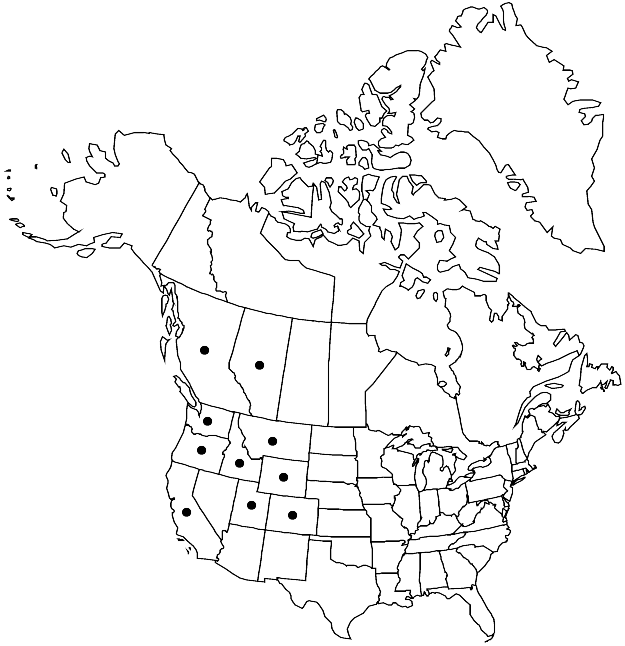Brachytheciastrum leibergii
Arctoa 11: 260. 2003.
Plants medium-sized, in dense tufts, green when young, very rapidly becoming yellow-green and often rich golden and orangish. Stems to 6 cm, creeping, terete to subcomplanate-foliate, somewhat julaceous, regularly pinnate, branches to 7 mm, terete or more commonly subcomplanate-foliate. Stem-leaves erect-spreading at base, densely arranged, falcate-secund, ovatelanceolate, slightly to moderately plicate, rarely not plicate, 1.3–2.3 × 0.3–0.8 (–0.9) mm; margins plane or recurved at places (more commonly at base), serrulate to base, sometimes indistinctly so to subentire; apex gradually acuminate, acumen falcate to circinate; costa to 40–70% leaf length, terminal spine present; alar cells subquadrate, 12–25 × 10–18 µm, region small, of 4–6 (–8) × 4–6 (–8) cells, distinctly to moderately gradually delimited; laminal cells linear, 70–100 × 6–9 µm; basal-cells shorter, 9–12 µm wide, indistinctly delimited from laminal cells. Seta orangish red, 1.2–1.8 (–2.4) cm, very strongly rough or sometimes moderately rough proximally and almost smooth distally. Capsule horizontal to somewhat pendent, orangish red, ovate to elongate, to 1.6 mm; endostome basal membrane 1/3–1/2 endostome length, cilia as long as segments. Spores 10–14 µm.
Habitat: Soil, humus, litter, decaying logs, stumps, tree bases, rock, conifer forests, shrubs
Elevation: moderate to high elevations (800-2300 m)
Distribution

Alta., B.C., Calif., Colo., Idaho, Mont., Oreg., Utah, Wash., Wyo.
Discussion
Brachytheciastrum leibergii is moderately common at middle elevations in mountains of the West from British Columbia and Alberta to Idaho, and south to northern California, where it is rare. The A. J. Grout (1928–1940, vol. 3) report of B. leibergii from Colorado is based on Brachythecium erythrorrhizon, but subsequently Brachytheciastrum leibergii was discovered in this state by W. A. Weber. Brachytheciastrum leibergii is usually easy to recognize by the relatively large and distinctively orangish appearance. This color is also characteristic of the seta and capsule. The branch leaves are more falcate and less plicate than the stem leaves. Brachythecium erythrorrhizon is superficially similar to B. leibergii and frequently confused with it. However, B. erythrorrhizon has a more pale green to stramineous color, plicate leaves with entire to slightly serrulate margins, and the species is dioicous. Small phenotypes of B. leibergii, for example, growing in more shaded or drier habitats, approach the size of B. velutinum. However, these have strongly falcate stem leaves and somewhat larger alar cells.
Selected References
None.
Lower Taxa
"long" is not a number."broad" is not a number.
